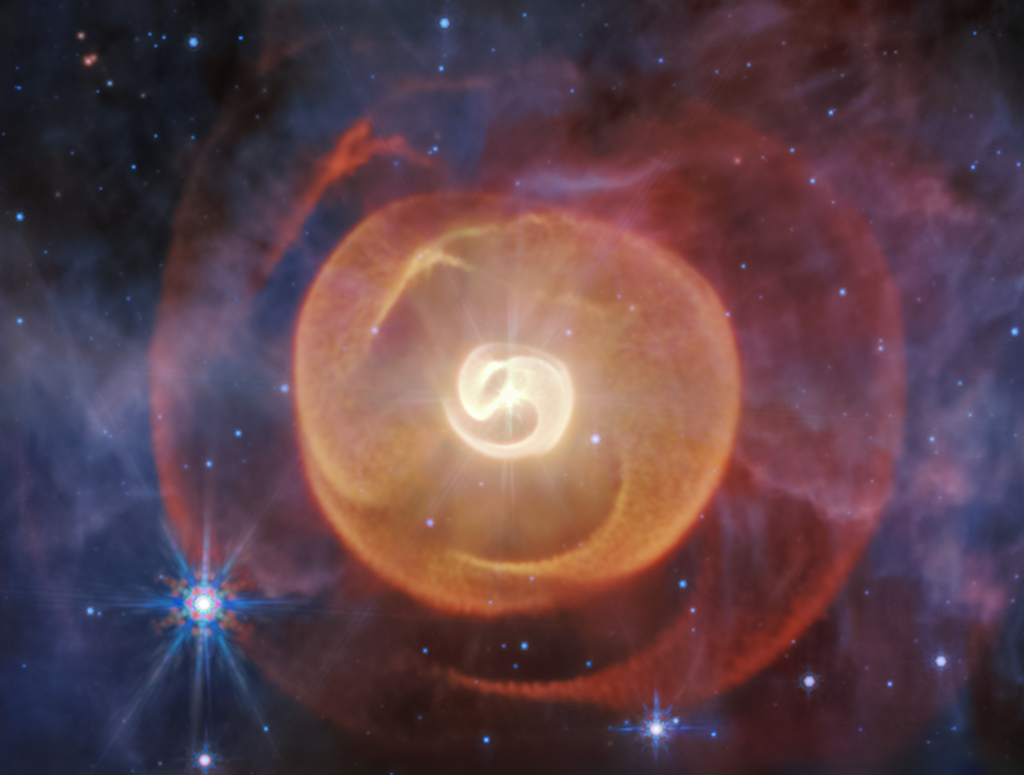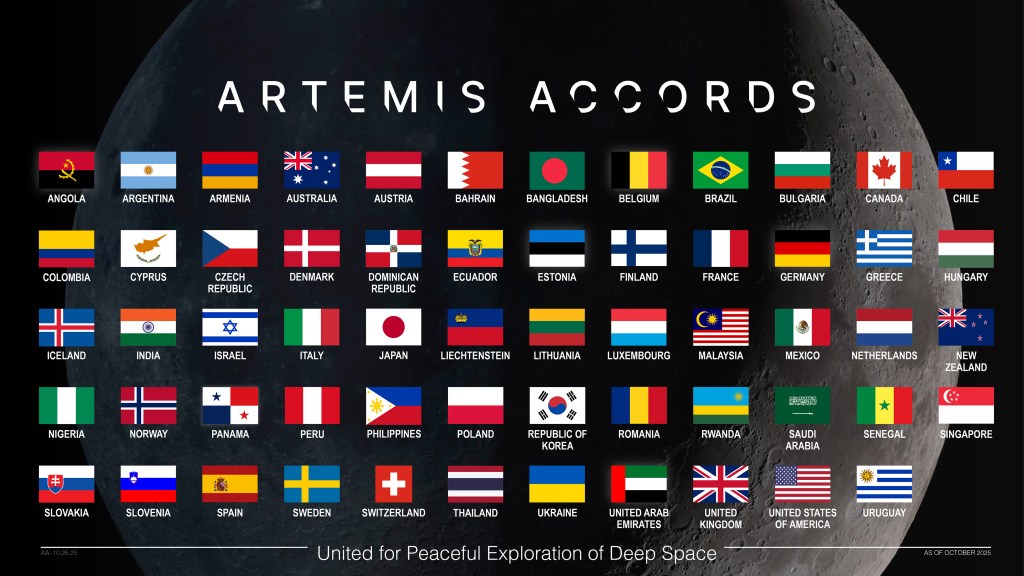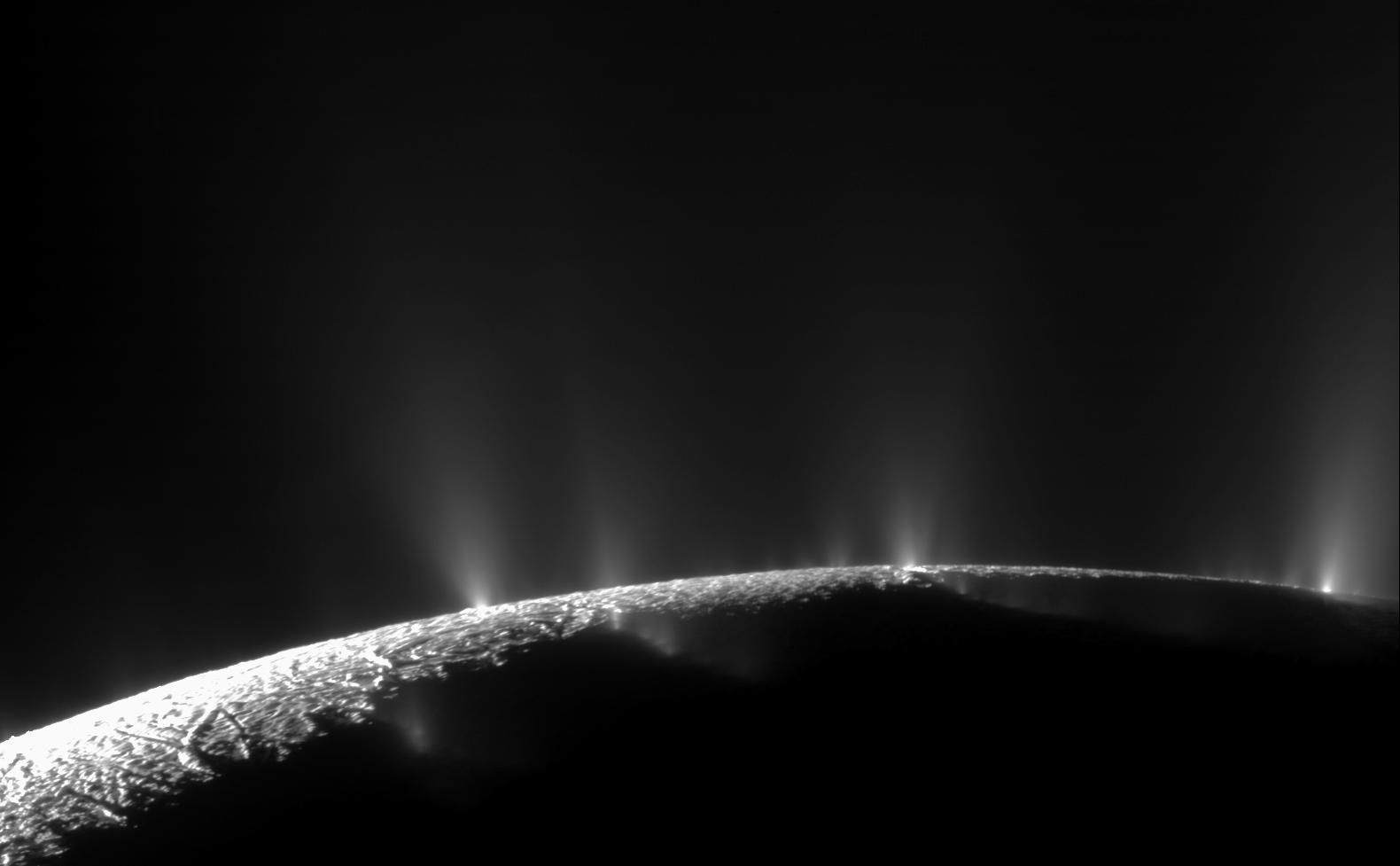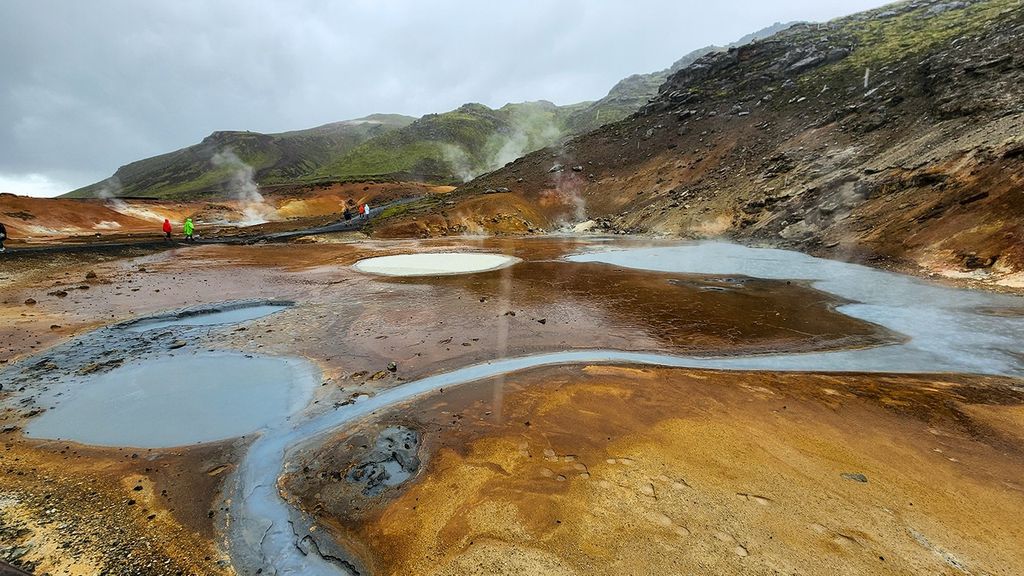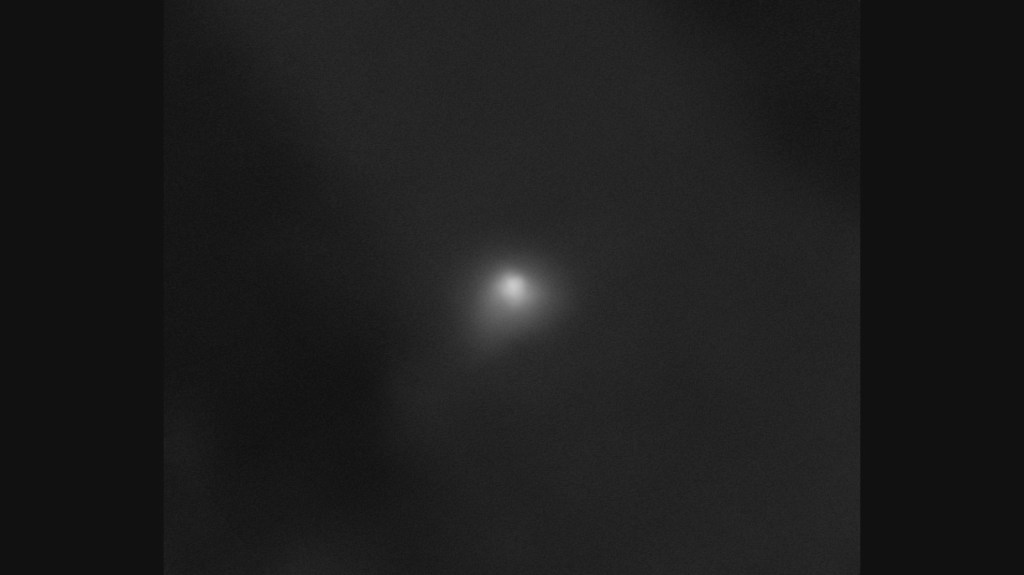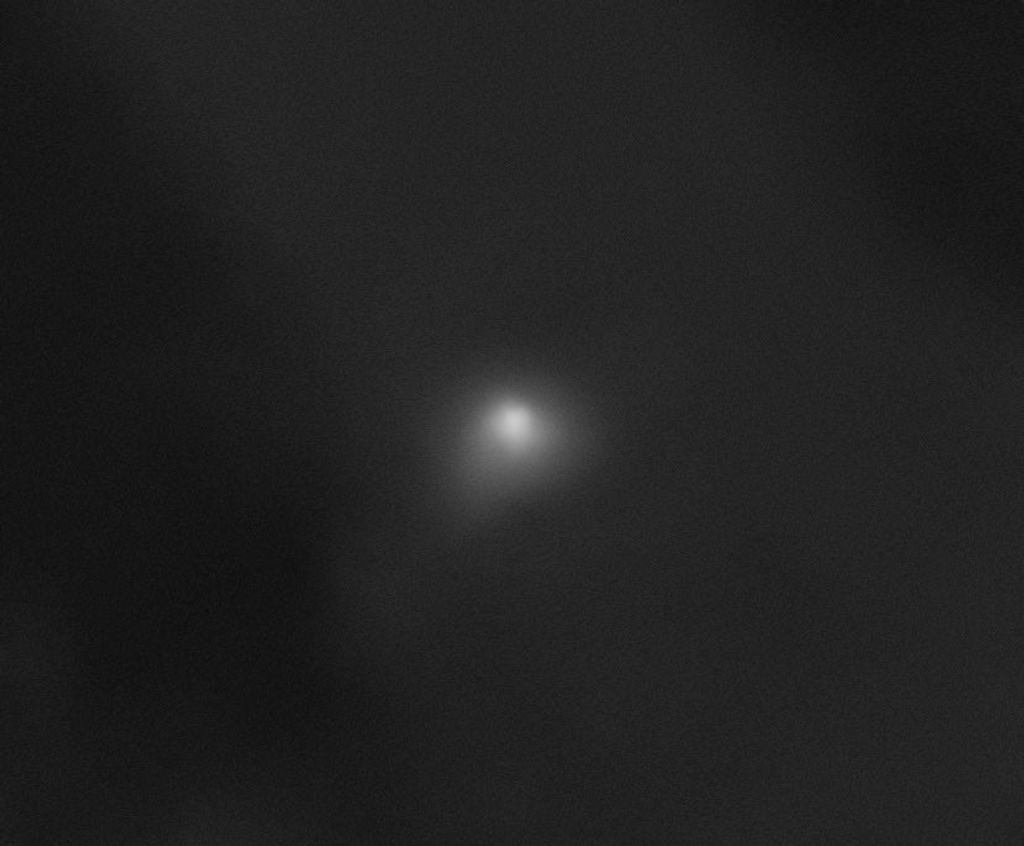1 min read
Hubble Catches a Dusty Moth
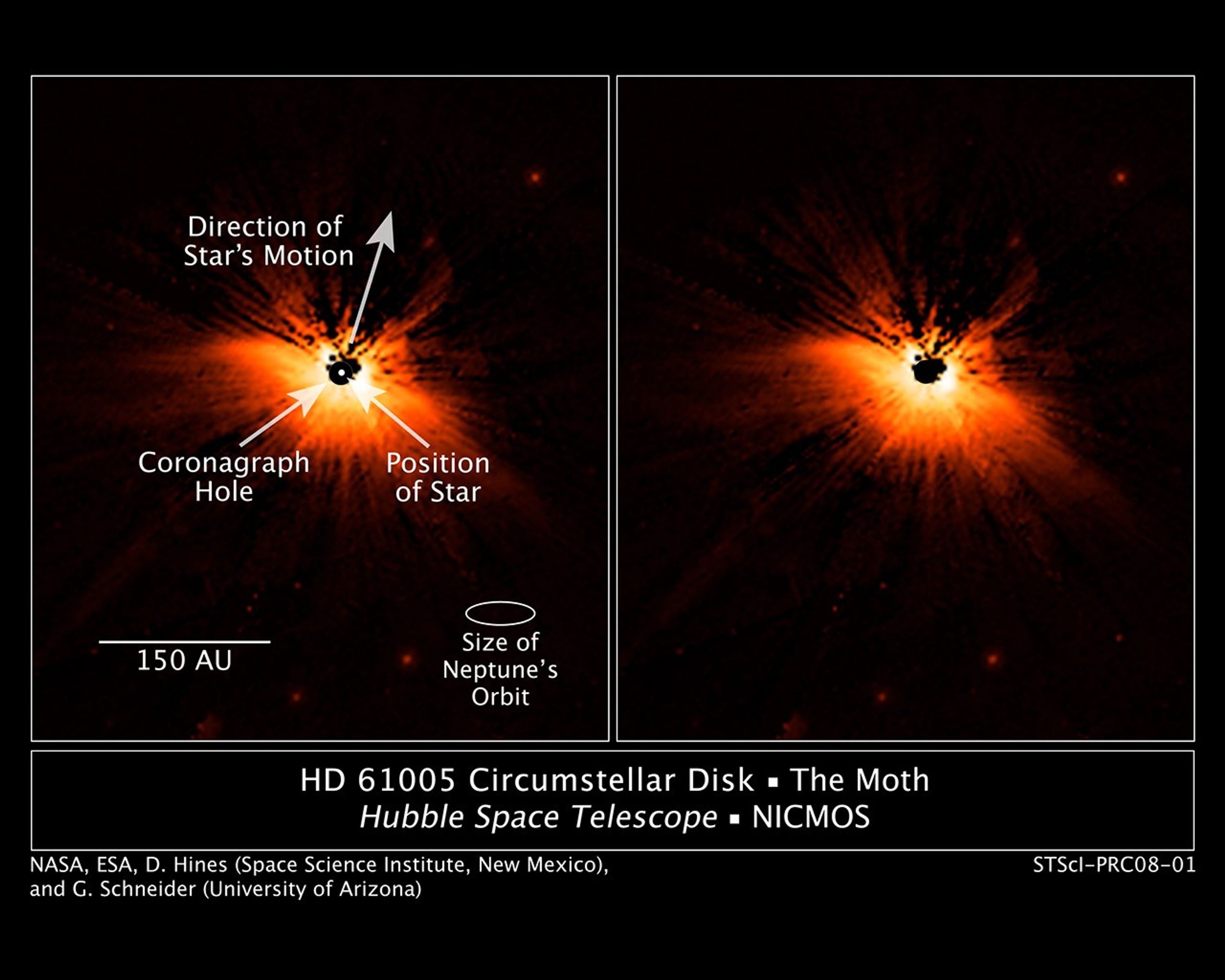
These near-infrared images, taken with the Near-Infrared Camera and Multi-Object Spectrometer (NICMOS) aboard NASA's Hubble Space Telescope, show the wing- shaped dust disk surrounding the young, nearby star HD 61005. Astronomers have dubbed the star system "The Moth" because the dust disk resembles the wings of the flying insect.
The Moth's wingspan extends about 22 billion miles from the star. The black disk in the center of the images represents the coronagraphic hole in the NICMOS camera that blocks most of the starlight so that astronomers can see details in the surrounding dust disk.
HD 61005 is about 100 million years old. Dust disks around stars of The Moth's age are typically flat structures where planets can form. These Hubble images show that some dust disks have some surprising shapes. HD 61005 appears to be plowing through a local patch of higher-density gas in the interstellar medium, causing material in the HD 61005's disk to be swept behind the star.
HD 61005 resides 100 light-years from Earth. NICMOS took these images in 2005 and 2006.
About the Object
- R.A. PositionR.A. PositionRight ascension – analogous to longitude – is one component of an object's position.07h 35m 47.45s
- Dec. PositionDec. PositionDeclination – analogous to latitude – is one component of an object's position.-32° 12' 14.04"
- ConstellationConstellationOne of 88 recognized regions of the celestial sphere in which the object appears.Puppis
- DistanceDistanceThe physical distance from Earth to the astronomical object. Distances within our solar system are usually measured in Astronomical Units (AU). Distances between stars are usually measured in light-years. Interstellar distances can also be measured in parsecs.100 light-years or 31 parsecs
About the Data
- Data DescriptionData DescriptionProposal: A description of the observations, their scientific justification, and the links to the data available in the science archive.
Science Team: The astronomers who planned the observations and analyzed the data. "PI" refers to the Principal Investigator.HST Proposal: 10527 D. Hines (Space Science Institute, New Mexico Office in Corrales, New Mexico). The science team comprises: D. Hines (Space Science Institute, New Mexico Office in Corrales, New Mexico), G. Schneider (University of Arizona) , D. Hollenbach (NASA Ames), E. Mamajek (Harvard-Smithsonian Center for Astrophysics), L. Hillenbrand (California Institute of Technology), S. Metchev (University of California, Los Angeles), M. Meyer (University of Arizona), J . Carpenter (California Institute of Technology), A. Moro-Martin (Princeton University), M. Silverstone (Eureka Scientific, Cary, NC), J. Serena Kim (University of Arizona), and T. Henning, J. Bouwman, and S. Wolf (Max Planck Institute for Astronomy, Heidelberg, Germany). - InstrumentInstrumentThe science instrument used to produce the data.HST>NICMOS
- Exposure DatesExposure DatesThe date(s) that the telescope made its observations and the total exposure time.November 20, 2005; June 18, 2006, Exposure Time: 1.3 hours
- FiltersFiltersThe camera filters that were used in the science observations.F110W (J-band)
- Object NameObject NameA name or catalog number that astronomers use to identify an astronomical object.HD 61005, The Moth
- Object DescriptionObject DescriptionThe type of astronomical object.Star with Circumstellar Structure
- Release DateJanuary 10, 2008
- Science ReleaseCircumstellar Dust Takes Flight in ‘The Moth’
- CreditNASA, D. Hines (Space Science Institute, New Mexico Office in Corrales, New Mexico), and G. Schneider (University of Arizona)

Share
Details
Claire Andreoli
NASA’s Goddard Space Flight Center
Greenbelt, Maryland
claire.andreoli@nasa.gov

